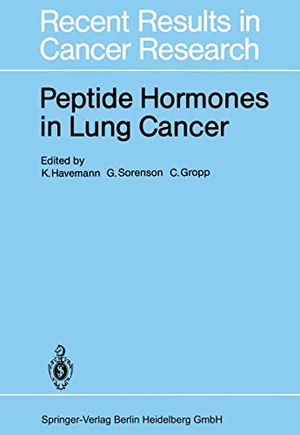Für statistische Zwecke und um bestmögliche Funktionalität zu bieten, speichert diese Website Cookies auf Ihrem Gerät. Das Speichern von Cookies kann in den Browser-Einstellungen deaktiviert werden. Wenn Sie die Website weiter nutzen, stimmen Sie der Verwendung von Cookies zu.
Cookie akzeptieren
Peptide Hormones in Lung Cancer
- Springer Berlin Heidelberg
- 1985
- Taschenbuch
- 264 Seiten
- ISBN 9783540155041
The incidence of lung cancer has reached epidemic proportions throughout the civilized world. One indication of the dimensions of this problem is that in the United States lung cancer has become the leading cause of cancer death in women as well as men. In 1912 there was a "nearly complete consensus of opinion that primary malignant neoplasms of the lung (were one) of the rarest forms of disease," according to Adler. By 1937, however, it had become clear that the incidence of lung cancer was increasing significantly; this increase has been progressive ever since. It is now well known that some lung cancers give rise to a variety of hormones which, at times, produce clinical manifestations. The association of hormone production with a "nonendocrine" tumor
Mehr
Weniger
zzgl. Versand
in Kürze